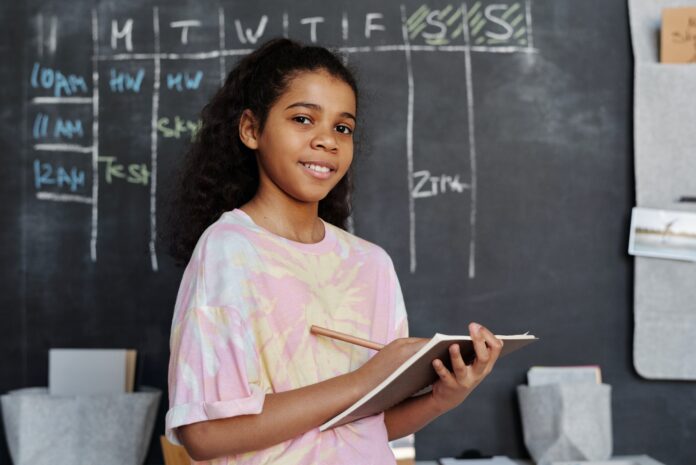
Whether it’s student-athletes forced to cut off their hair, or a middle school serving fried chicken to start Black History Month, Black students consistently face racial micro and macro aggressions at school that they don’t deserve.
Indeed, racial bias in school discipline casts a long shadow over the American education system.
The latest example: A Black student was punished for the wrongdoings of a white teacher who repeatedly said the n-word in class.
After Missouri high school sophomore Mary Walton captured her geometry teacher using the n-word on video, she was suspended for three days for violating district policy on cell phone use in the classroom.
The incident occurred on May 9 at Glendale High School in Springfield. Walton pulled out her phone to record her teacher saying the racial slur. Walton says the teacher said the n-word six times, but her roughly one-minute video captures him using the racial slur twice.
“I know two of my classmates were talking, and he just kind of got in their conversation,” Walton told the Springfield News Leader. “He said something like, ‘Why are you allowed to say it and I am not?’”
The teacher was placed on administrative leave after the video circulated on social media. He has since resigned and is no longer employed by the district. The district has not publicly identified the teacher.
Incidents like this reaffirm what the data shows: Black students continue to be disciplined and suspended at higher rates than their peers, even for the smallest infraction.
Glendale High School released a statement justifying Walton’s suspension, stating, “The student handbook is clear, however, on consequences of inappropriate use of electronic devices… SPS is confident that the district appropriately and promptly handled all matters related to what occurred at Glendale.”
At a time when an estimated 95% of teens have access to a smartphone, Black kids aren’t the only ones pulling their phones out in class, which begs the question: Was this about phone use or what Walton recorded?
Walton family attorney Natalie Hull said, “The school policy of disciplining students to teach them to behave in the appropriate manner is not in line with their own actions. Mary saw a teacher do something wrong, and she documented it. Language can be harmful, and Mary captured proof of her teacher, a person who is supposed to protect children, harming them through his use of a racial slur.”
“I was just confused because I don’t know what I did wrong,” Walton told the News-Leader. “I feel like if I didn’t take the video, he probably would not have been held accountable like he is right now. So I don’t know why I am being punished.”
Incidents like this reaffirm what the data shows: Black students continue to be disciplined and suspended at higher rates than their peers, even for the smallest infraction.
Study after study shows that educator biases, combined with biased school climates, significantly contribute to racially disparate school discipline.
Study after study shows that educator biases, combined with biased school climates, significantly contribute to racially disparate school discipline.
As Richard O. Welsh, an assistant professor of education leadership and policy studies at the Steinhardt School of Culture, Education, and Human Development, New York University, wrote in a 2021 op-ed for Education Week about this issue, “teachers refer Black and white students differently for the same kind of misbehavior.”
Welsh wrote that “Black students are referred more than white students for subjective behaviors (for example, defiance of authority, disrespect, excessive noise, threat, and loitering).”
Jayanti Owens, an assistant professor at the School of Management at Yale University, recently designed an experiment using videos of white, Black, and Latino teenage actors performing identical misbehaviors. The videos were shown to over 1,300 teachers from nearly 300 U.S. middle and high schools, who were asked to evaluate the situation and say what they would do in response.
“Even though both the Black and white students were behaving in the exact same way, the teachers perceived the Black students as behaving more negatively,” Owens explained.
“In addition to this, even when the Black and white boys’ behaviors were perceived with the same level of negativity, the Black students were still more likely to be sent to the office.”
Hull noted in her statement that if the teacher “had been hitting a student —or worse — would the school have reacted the same? Frankly, this school is exercising a chilling effect on all of the students by sending the message that they will get in trouble if they capture evidence of their teachers doing something wrong.”
Meanwhile, Walton’s family is seeking an apology from the district.


